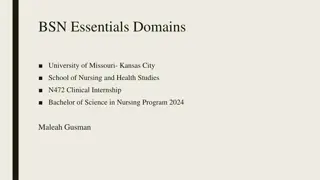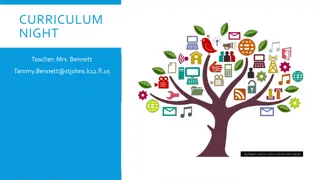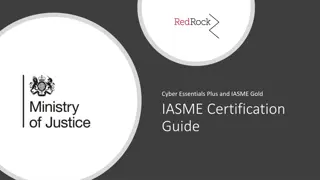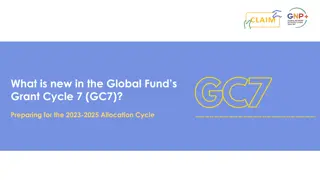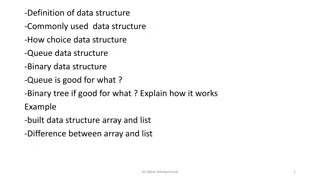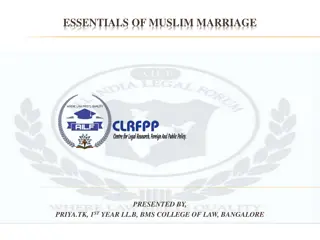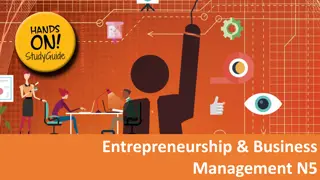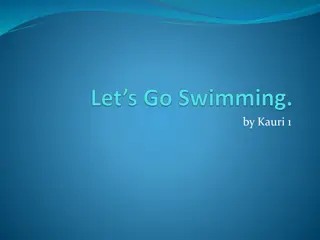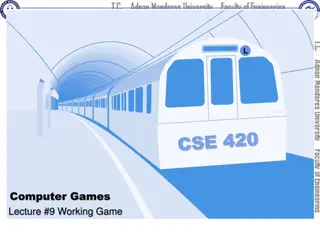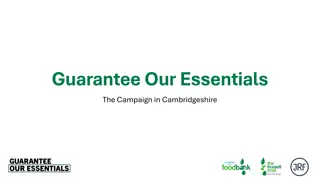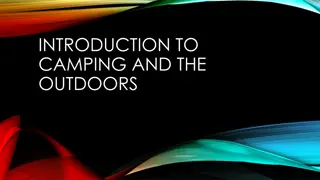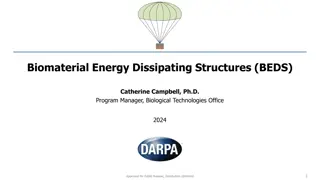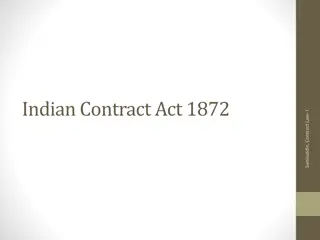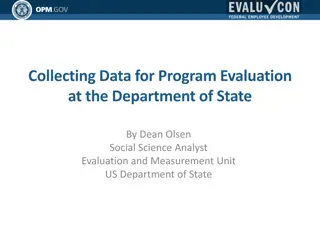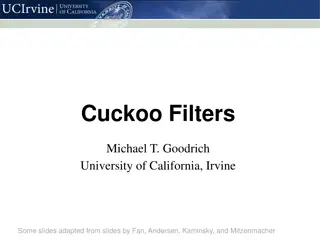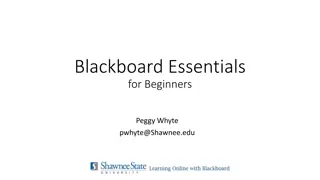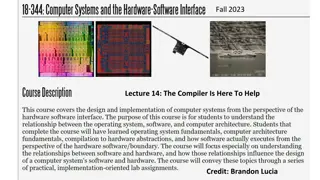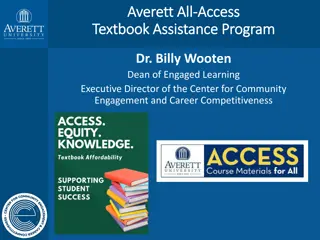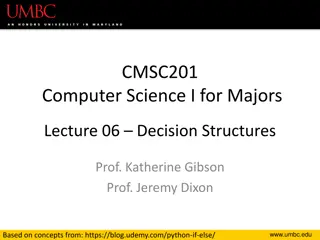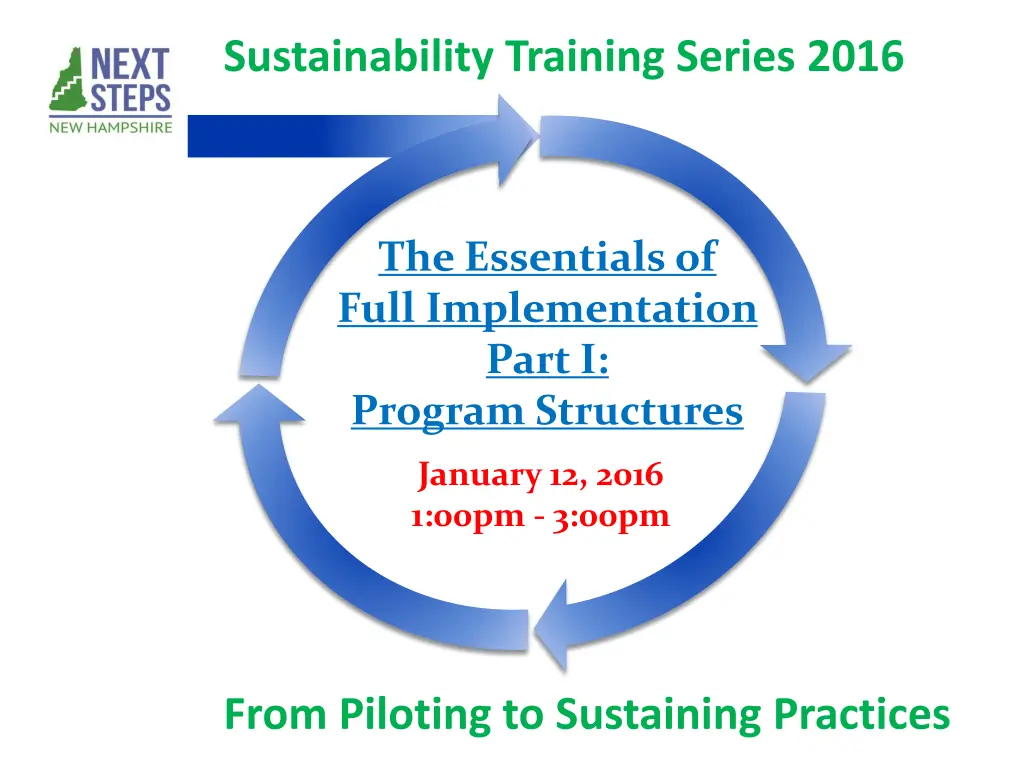
Boosting Sustainability Training: Full Implementation Essentials
Dive into the essentials of full sustainability program implementation with the Sustainability Training Series 2016. Explore program structures, impact assessment, GTM techniques, learning objectives, materials, and more. Enhance your knowledge and skills to foster sustainable practices effectively.
Download Presentation

Please find below an Image/Link to download the presentation.
The content on the website is provided AS IS for your information and personal use only. It may not be sold, licensed, or shared on other websites without obtaining consent from the author. If you encounter any issues during the download, it is possible that the publisher has removed the file from their server.
You are allowed to download the files provided on this website for personal or commercial use, subject to the condition that they are used lawfully. All files are the property of their respective owners.
The content on the website is provided AS IS for your information and personal use only. It may not be sold, licensed, or shared on other websites without obtaining consent from the author.
E N D
Presentation Transcript
Sustainability Training Series 2016 The Essentials of Full Implementation Part I: Program Structures January 12, 2016 1:00pm - 3:00pm From Piloting to Sustaining Practices
Next Steps NH Pre/Post Training Assessment Next Steps NH Pre/Post Training Assessment Similar to the need for teachers to gain data on student understanding, we need to determine what impact our training has on your understanding of the training topic/content. Purpose: Purpose: Evaluate Next Steps NH Training NOT participants Sustainability PD Series Pre/Post Results Sustainability PD Series Pre/Post Results 51% Average 73% 36% Module 1 70% 62% Measure the Impact of Knowledge Measure the Impact of Knowledge Pre-test - assess prior knowledge Post-test - assess knowledge gain Additional questions - quality & usefulness Module 2 88% 55% Module 3 63% 61% Module 4 93% 39% Module 5 52% 0% 25% 50% Post 75% 100% Pre
Making the Most of a GTM Muting & unmuting Using chat function Group activities Participation via Go To Meeting
Agenda Day 1 Project Overview Where are you Now? What are Program Structures Leadership Team, Data, and Procedures Day 2 Day 1 Recap Maintaining Supports & Professional Development Participatory Adults Learning Strategies
Learning Objectives Participants will be able to identify: Recommended Program Structures for sustaining transition-focused education efforts, and related resources. Stages of Implementation of Next Steps Initiatives in their school Goal for future transition-focused Leadership Team, Data, and Procedures
Materials Today s Slides Sustainability Resources Handout Part 1 Activity Sheet Program Structures Handout
NSNH Essentials Next Steps NH offers training and coaching on embedding evidence-informed transition practices in schools to increase the graduation rate of students with disabilities and students at-risk of dropping out and prepare them for college, career and adult life. Training introduces and illustrates the practice. Coaching supports putting the training to use.
NSNH Essentials Transition practices include: Enhanced transition planning, activities & opportunities, including RENEW Best practice Extended Learning Opportunities (ELOs) High level family-school engagement Evidence shows that embedding new practices requires multi-stage implementation.
NSNH Essentials Implementing practices with fidelity is a primary focus. The use of planning tools ensures fidelity. Not In Place Partially In Place In Place Critical Component of Practice X Students-at-risk and students with IEPs participate meaningfully in the development of their post school goals. When implemented with fidelity these practices will increase the graduation rates of students with disabilities and students at-risk of dropping out and prepare them for college, career and adult life.
Family Family Engagement Engagement Student Student- -Focused Focused Planning Planning Two-way communication Shared decision making Transition-related training opportunities Student Led IEPs RENEW Transition Assessment Transition- Focused Education Framework Student Student Development Development Program Structure Program Structure Leadership Teams Ongoing Strategic Planning Policy and Procedure Transition Competencies for Staff Transition Coordinator ELO Board Best Practice ELOs Self-Determination RENEW Interagency Interagency Collaboration Collaboration Community Services Colleges/Universities ELO Partners Adapted from Taxonomy for Transition Programming, Kohler, P.D. (1996) & NH CoP Template for Secondary Transition & NH Standards for Family /School Partnerships
Putting the Pieces Together 2. INSTALLATION Develop action plans Participate in foundational trainings RENEW student mapping Pilot a high quality ELO, EI transition practices Offer parent education 1. EXPLORATION Develop & Meet w/ Project Teams (Leadership ELO FEG RENEW) Complete Fidelity tools SUSTAINABILITY Leadership, ELO, RENEW & Family Engagement Teams & 4. FULL IMPLEMENTATION Processes & procedures in place 3. INITIAL IMPLEMENTATION Implement action plans Identify & address challenges Scale up ELOs, RENEW & Transition Practices Integrate family-school partnership strategies Program Structures System recalibrated to accommodate & support new initiatives (Based on Dean Fixen et al & SWIFT)
Cohort 2 Timeline Recap June 2014: Introduction LT meetings and Data Collection begins (Transition and ELO Fidelity Tools, ELO Characteristics Database) Action plans developed February 2015: Exploration activities begin RENEW, ELO Trainings, Family Focus Groups, Transition Course May 2015-present: Installation and Initial Implementation begins: RENEW, ELO, Family Engagement, Transition Activities
ACTIVITY 1: Where are you? Complete Activity 1 to determine what stage of implementation your school is in with Next Steps activities and strategies in the left column. Use the descriptions of each stage to help you decide what stage you are in.
Transition-Related Program Structures: Program Philosophy Leadership Team and Data with Transition as a priority Strategic Planning and Program Evaluation Policies and Procedures Professional Development Resource Allocation
E. Program Structures Practices Show Framework
Philosophy Program Structures Next Steps Vision/Values/Mission Leadership Team Data
Why a Leadership Team? Leadership teams Promote collaboration Provide direction and support Enhance communication Identify resources Provide an environment for sharing and problem solving
Team Leader Plans and facilitates meetings Recruits new members Oversees an action plan Next Steps Transition Liaison
ACTIVITY 2: Maintaining Momentum Beyond Next Steps, will you: EXPLICITLY focus on transition for these populations? How? Have a separate Leadership Team? If so, re the right people on the team? Who is missing? Is there anyone who no longer needs to be there? Who will be your leader?
Maintaining your Leadership Team NSTTAC has a Transition Team Leader Sustainability Toolkit. The toolkit addresses: Team leader strategies Needs assessments Resources Evaluation materials Guide provides a step-by-step process for developing and sustaining leadership teams
Philosophy Program Structures Next Steps Vision/Values/Mission Leadership Team Data
Data and Next Steps Next Steps Data Tools/Methods Transition Focused Education Framework ELO Fidelity Tool and Characteristics Database RENEW Readiness Checklist Family Focus Groups Next Steps Data Reports
Data Types Student, Program, District Referral source Students are eligible for participation in RENEW if . Progress monitoring Case Manager John has increased his skill with student engagement as evidenced by Outcome measures ABC High Schools post- school employment rates have increased by .
ACTIVITY 3: Data Ideas and Discussion As a team, discuss: Of the initiative you have under way, what data exists? What data do you wish you had? Please the chat box to share any specific measures you are using in your Next Steps work. NSTTAC Evaluation Toolkit
Program Evaluation Program Structure: Fidelity Tools provide Data Are you implementing with Fidelity?
Strategic Planning Program Structure: Review current practices, data and make decisions about what s next Multiple perspectives provide richest options and possibilities Align with other community outreach/planning.
Policies and Procedures Program Structure Internal External Consistency prevents loss due to turnover Promotes fidelity and best practice
Amy Jenks Amy.jenks@doe.nh.gov 271-3842 Sherry Burbank Sherry.burbank@doe.nh.gov 271-3294
Thank You! The contents of this presentation were developed under a grant from the US Department of Education, H323A120003. However, those contents do not necessarily represent the policy of the US Department of Education, and you should not assume endorsement by the Federal Government. Project Officer, Corinne Weidenthal. This product is public domain. Authorization to reproduce it in whole or in part is granted. While permission to reprint is not necessary, the citation should be: NH State Personnel Development Grant Next Steps NH (2012-2017). New Hampshire Department of Education, Concord.

